(Author: Judy Lin, Chief Editor, LEDinside)
Lextar’s booth highlighted more advanced lighting technology at the lighting show this year, including several IR LED solutions, automotive lighting and UV LED modules at Taiwan International Lighting Show (TILS) 2016, which took place at Nangang Exhibition Hall from April 12-16, 2016 in Taipei.
 |
|
Lextar showcased a nonvisible IR LED at TILS 2016 last week. (All photos courtesy of LEDinside) |
Nonvisible IR LED and other low-mid power IR LED sensor products
The company’s IR LED products could be classified into low-mid power LEDs for sensor applications, and high power LEDs that were mainly used for night vision or surveillance applications. The company’s PR 73 and PR36 series IR LEDs suitable for touch sensor panel applications could reduce the IR sensor modules in screens by about 25% from 3.8 mm to 2.9 mm thick, said a company representative.
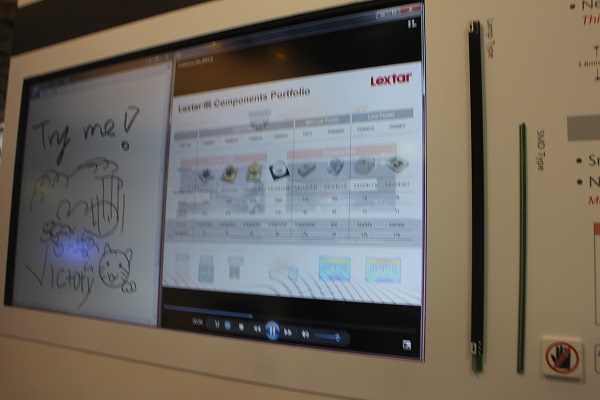 |
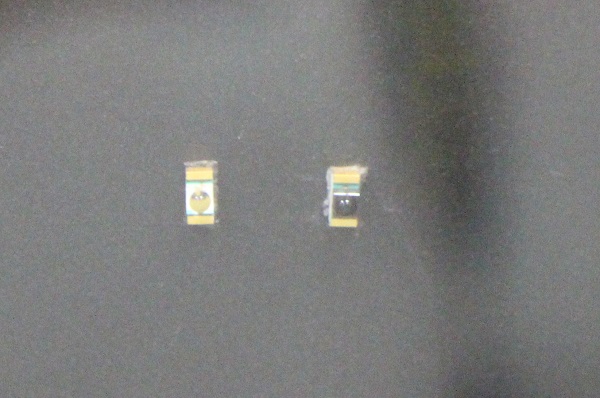 |
|
Top: Lextar displays a IR LED sensor enabled screen with 10 sensor points at its booth at TILS 2016. Bottom: The company's low and mid power IR LEDs PR 73 and PR36. |
As for high power IR LED products, the company showcased PR88, PR71 and PR 80 series at the show. By making IR LEDs in the nonvisible wavelength of about 910 nm, the LEDs cannot be seen by the naked human eye. Human eyes are responsive to visible light spectrum ranging from 390nm to 700 nm. “These were especially requested by some clients,” said the company spokesman.
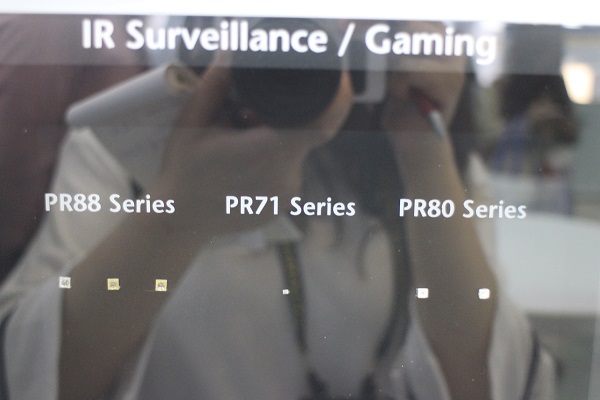 |
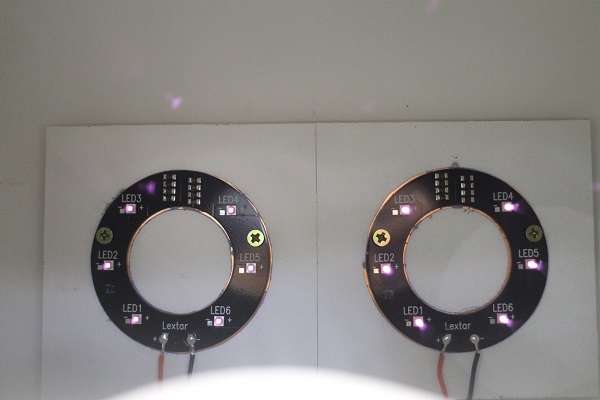 |
|
Top: The company's high power IR LEDs for surveillance cameras PR88, PR71, and PR 80 series. Bottom: The IR LED module on the right cannot be seen by the human eye, even though it can still be captured on camera. |
These high power IR LEDs with a 125 degree beam angle are suitable for stealth mode applications, the nonvisible IR LEDs could be applied in coastal security and surveillance applications, so coast guards do not alert smugglers approaching patrol ships.
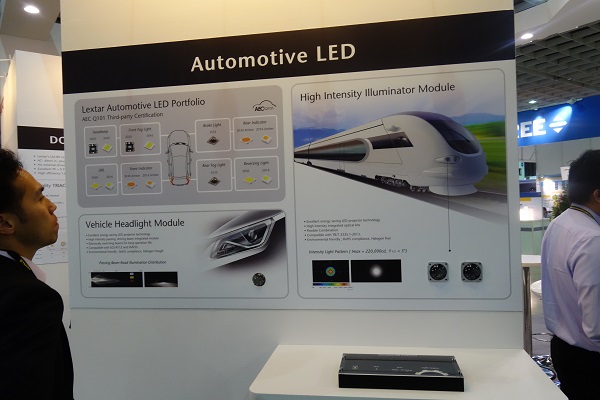 |
|
Lextar's LEDs for high speed rail applications and automotive LED headlights. A man looks at the products on the left hand side. |
LED headlights for high speed rail applications
Automotive lighting applications was another highlight at the show, one of the automotive lights caught LEDinside’s attention the most: LED headlights for high speed trains. The company is targeting the high speed rail market in China with these lights, said Jarvis Tsai, Principal Engineer, Advanced Lightning Design Sec. I, Advanced Lighting Design Department, Lextar. The company’s started to ship the high speed rail LED headlights during first to second quarter in 2016, which are already being shipped to international markets including to trains in Southeast Asia.
Compared to conventional automotive lighting, rail headlights have higher beam distance requirements of at least, but usually lower beam angle requirements since it is moving on tracks that are clear of pedestrians and other incoming vehicles. The beam angle of Lextar’s LED lights is less than 3 degrees. Beam angle designs can be adjusted with reflectors in the headlight design, said Tsai.
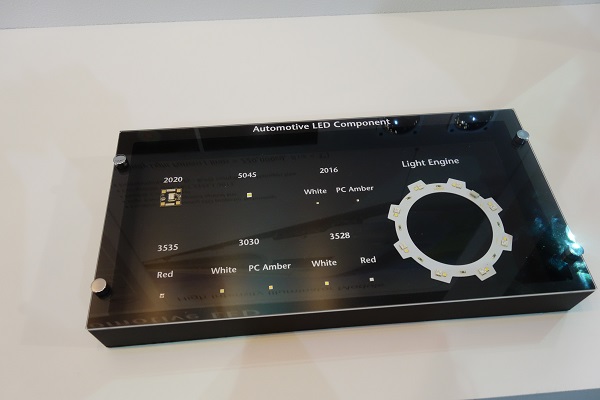 |
|
Lextar's automotive LED components for LED headlights, taillights and other automotive lighting applications. |
In a way the LED headlights for rail applications resembles laser lights, due to the high light intensity required of a lumen output of at least 2 million candelas and above, he explained. Emphasize in rail light designs is illumination distance rather than wide beam angle for trains travelling at 300 km/hour to 500 km/hour.
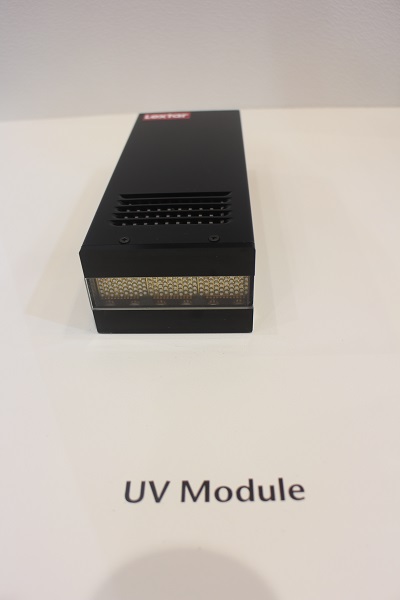 |
|
UV modules were highlighted at Lextar's booth. |
Next step in UV LED sector: UVC LED
The company also focused more on UV LED modules rather than chip products at the show this year. Most LED companies are still vying UV-A LED market at the moment, but it appears the Taiwanese LED company is planning to jump ahead. Lextar’s next step is to develop UV-C LEDs by the end of this year, a Lextar representative said at the show.
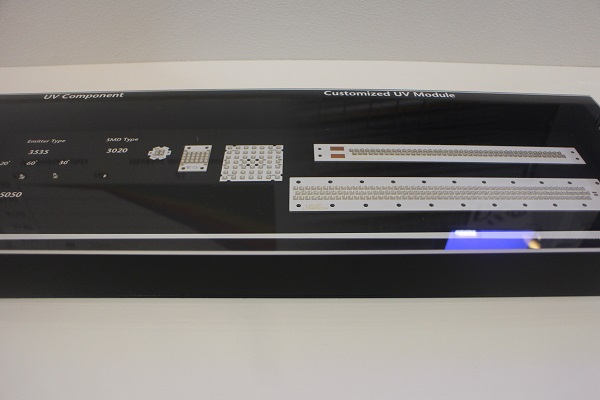 |
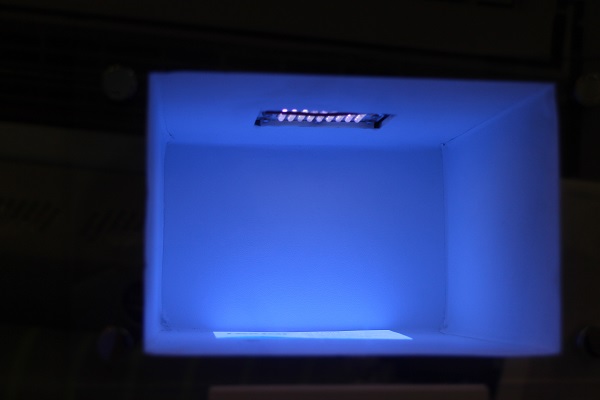 |
|
Top: Lextar's UV LED chip, component, and module products. Bottom: Lextar demonstrates a functioning UV LED at its booth. |
The company’s current UV LED products fall in the UV-A LED wavelength spectrum of 365 nm to 405 nm, its company products are being used for exposure applications in Taiwan, such as by contact lens manufacturers to cure silicone lens.
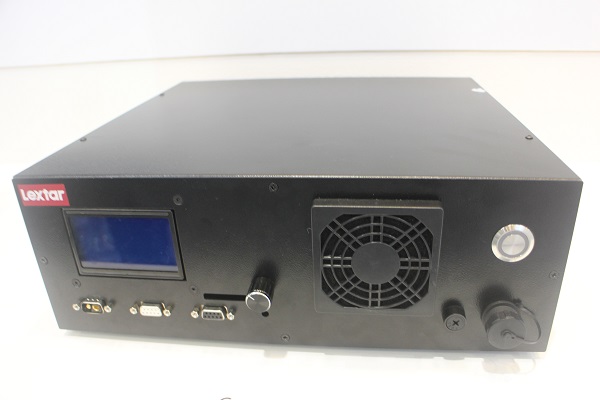 |
|
A machine using Lextar's UV LEDs. |
The UV LED chips are offered in three chip designs including lateral and vertical flip chips depending on the thermal dissipation requirements. According to Lextar representatives, the UV LEDs are being offered as light bar modules to clients. The 3535 LEDs are suitable for most general lighting applications.
To conclude, Lextar’s booth showcased some interesting IR LED, automotive lighting, and UV LED designs at TILS 2016. Nonvisible IR LEDs for instance are very suitable for military or law enforcement applications where stealth mode operations are desirable, while the high speed rail LED highlight is a highly niche lighting product. The company’s also seems to be readying itself for UV-C LEDs, but considering the high technology threshold it might take a while before the products make its way onto the market.






















